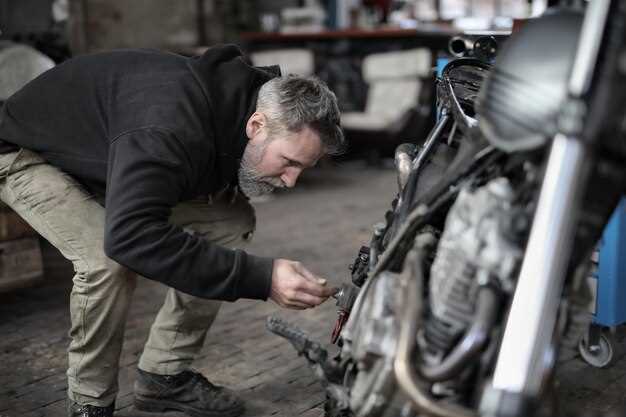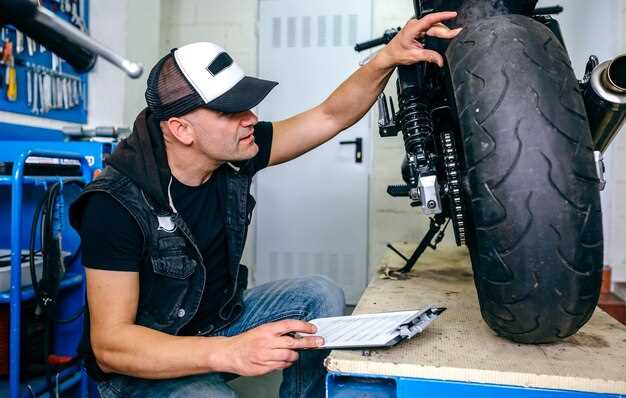
When it comes to enhancing the performance of your race bike, aftermarket parts offer a wealth of opportunities. Unlike OEM (original equipment manufacturer) components, aftermarket parts are designed to provide improved functionality, increased durability, and sometimes even a unique aesthetic that can set your bike apart from the crowd. Understanding how to navigate the vast selection of aftermarket parts can significantly impact your racing experience and outcomes.
This comprehensive guide aims to equip you with the essential knowledge needed to make informed decisions in selecting aftermarket parts for your race bike. We’ll explore various types of parts, from performance upgrades such as exhaust systems and suspension components to aesthetic modifications and safety gear. Each category of parts comes with its own set of considerations that every racer should be aware of before investing their hard-earned money.
In addition to performance enhancements, it’s crucial to consider compatibility, quality, and brand reputation when choosing aftermarket parts. With countless manufacturers vying for your attention, knowing what to look for and which parts deliver on their promises will save you time, money, and frustration. This guide will not only highlight the most popular aftermarket parts but also provide tips on installation, maintenance, and performance optimization, ensuring your race bike operates at its best on the track.
Buying Aftermarket Parts for Race Bikes: A Complete Guide
When it comes to enhancing the performance and aesthetics of race bikes, aftermarket parts play a crucial role. These components can improve speed, handling, and overall ride quality. Before purchasing, it’s essential to understand the various types available and how they can suit your specific needs.
First, identify the type of aftermarket parts that provide the most benefit for your racing style. Key categories include exhaust systems, suspension components, brakes, and aerodynamics kits. Upgrading the exhaust system can improve airflow and increase engine efficiency, while enhanced suspension parts help in handling rough terrain and tight corners more effectively.
Next, consider compatibility with your bike. Not all aftermarket parts will fit every model, so verify compatibility with your specific make and model. Consulting your bike’s manual or seeking advice from professionals can help prevent any mismatches.
Quality is paramount when selecting aftermarket components. Look for established brands known for their reliability and performance. Reading reviews and gathering feedback from fellow racers can provide valuable insights into which brands deliver the best results. Keep in mind that while some lower-cost options may seem attractive, investing in high-quality parts often yields better long-term performance and durability.
Price comparison is another important step in the buying process. Prices can vary significantly among retailers, so take the time to shop around. Don’t forget to factor in shipping costs and potential installation fees if you’re not planning to do the work yourself.
Finally, installation and tuning are critical after acquiring aftermarket parts. Proper installation is crucial for the performance of your bike, so if you lack the necessary skills, hiring a professional mechanic is advisable. Additionally, post-installation tuning can maximize the benefits of your upgrades, ensuring that all components work harmoniously.
In summary, buying aftermarket parts for race bikes requires careful consideration of compatibility, quality, pricing, and installation. By following this guide, you can make informed choices that will enhance your bike’s performance on the track.
Choosing the Right Aftermarket Parts for Performance Upgrades

Choosing the right aftermarket parts is crucial for enhancing the performance of race bikes. With an extensive selection available, it’s essential to consider several key factors to ensure optimal results.
- Compatibility: Verify that the aftermarket parts are compatible with your specific bike model. Different bikes have unique specifications, and using parts designed for other models can lead to performance issues.
- Quality: Prioritize high-quality aftermarket components. Look for reputable brands that offer durable materials and reliable performance. Research reviews and feedback from other riders to gauge quality.
- Performance Goals: Define your performance goals before selecting parts. Whether you aim for increased speed, better handling, or improved braking, knowing your objectives will help narrow down suitable upgrades.
- Weight Reduction: Consider parts that can enhance performance through weight reduction. Lighter components can lead to improved acceleration and handling, which are critical in racing scenarios.
- Installation Requirements: Evaluate whether the aftermarket parts require professional installation or if they can be installed at home. Some upgrades may involve complex procedures that necessitate specialized tools or expertise.
- Warranty and Support: Check if the aftermarket parts come with a warranty or customer support. This ensures that you have recourse in case of defects or installation issues.
By taking these factors into account, riders can make informed decisions when choosing aftermarket parts for their race bikes, ultimately leading to significant performance improvements on the track.
Evaluating Quality and Compatibility of Racing Bike Components

When considering aftermarket parts for racing bikes, evaluating quality and compatibility is crucial for optimal performance. The first step is to research the manufacturer’s reputation. Look for brands known for their durability, innovation, and positive user reviews. A reputable manufacturer typically adheres to strict quality control standards, enhancing the likelihood that their products will meet or exceed OEM specifications.
Next, you should assess the materials used in aftermarket components. High-quality materials, such as carbon fiber, aluminum alloys, and titanium, can provide significant weight savings and strength. Understanding the advantages and potential drawbacks of different materials will help you make informed decisions regarding component upgrades.
Compatibility is another critical factor. Ensure that the aftermarket part is specifically designed for your bike model. Subtle differences in frame geometry, components, and specifications can lead to improper fitting or performance issues. Always consult manufacturer guidelines and compatibility charts before finalizing your purchase.
It is also beneficial to engage with the biking community. Forums, social media groups, and local bike shops can provide valuable insights from experienced riders who have tested various aftermarket parts. Their first-hand experiences can guide you in selecting components that enhance your bike’s performance and safety.
Lastly, when evaluating aftermarket parts, consider the warranty and customer support offered by the manufacturer. A robust warranty can protect your investment and provide peace of mind, while responsive customer service can assist you in resolving any compatibility issues that arise after purchasing components.
Navigating Costs and Budgeting for Aftermarket Modifications
When it comes to enhancing race bikes, understanding the financial aspects of aftermarket modifications is crucial. The costs associated with aftermarket parts can vary significantly based on the brand, type, and performance enhancements. To effectively budget for these modifications, it is essential to prioritize what aspects of the bike you want to improve–such as speed, handling, or aesthetics.
Start by researching various aftermarket parts, comparing prices from reputable suppliers, and identifying the components that provide the best value for performance. It’s wise to create a detailed list of necessary modifications, categorizing them into essential upgrades and optional enhancements. This will help in focusing your budget on parts that will yield the most significant performance improvements.
Additionally, consider the overall cost of installation for each part. Some modifications may require professional installation, which can increase expenses. Calculating both parts and labor will give a clearer picture of the total investment needed. Be sure to factor in potential additional costs, such as tools or equipment for DIY installations.
Another strategy for managing costs is to explore used or refurbished parts, which can often provide significant savings without sacrificing quality. Joining racing forums or community groups can help you find deals and recommendations for reliable aftermarket parts.
Ultimately, a well-thought-out budget will allow you to make informed decisions, ensuring that each dollar spent contributes towards enhancing your race bike’s performance effectively. By tracking expenses and adjusting your plan as needed, you can achieve your performance goals while maintaining financial stability.
